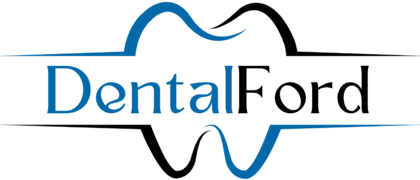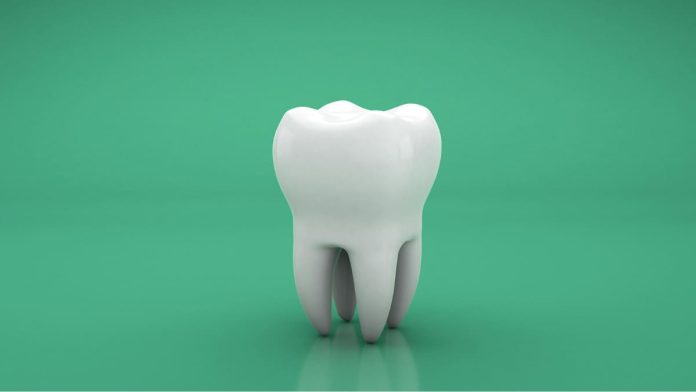Teeth Overview
Teeth are an essential part of the body for eating food, speaking, smiling, etc. There are many different types of teeth with different names. It’s one of the strongest parts of the human body and is made up of Enamel, Dentin, Cementum, and Pulp. Let’s understand the Human tooth with the anatomical diagram given below and learn in detail.
Tooth Anatomy with Diagram and Names
Parts of Teeth
A tooth has mainly two parts :
- Crown : The tooth Crown is the top portion of the tooth that you can clinically see in your mouth. The crown portion is covered by enamel, which protects it.
- Root : The root is clinically not visible in the mouth in normal conditions, as it is covered under the gum line, fixed in the tooth socket, or alveolar bone socket with periodontal ligaments that hold the tooth in the socket.

What Are Teeth Made of
Teeth are made up of Enamel, Dentin, Cementum, and Pulp. (Layers of Teeth)
- Enamel : It is the outermost layer covering the crown portion of teeth. It is the hardest structure in the body that protects the teeth.
- Dentin : It is the second layer beneath the enamel covering that provides the structural mass to teeth. It contains dentinal tubules, and it’s not as hard as enamel, and it gets cavities more easily than enamel. If dentin is exposed in the outer environment due to enamel wear, it causes dentinal hypersensitivity also known as teeth sensitivity. Learn more about Dentin/Dentine
- Cementum : It covers the root portion of the tooth and anchors the tooth with periodontal fibers within the socket.
- Pulp : Pulp is available in the pulp chamber, which is the innermost part of the teeth. Pulp is made up of Blood vessels, Nerves, and Connective tissue. It provides nourishment to the tooth and gives sensation to the tooth.
Related: Tooth Eruption with Tooth Eruption Chart
Types of Teeth in Humans

There are four types of teeth in adult humans. Incisors, Canines, Premolars, and Molars; Premolars are absent in children. Adult humans have 32 permanent teeth in their mouths, and children have 20 teeth in their mouths.
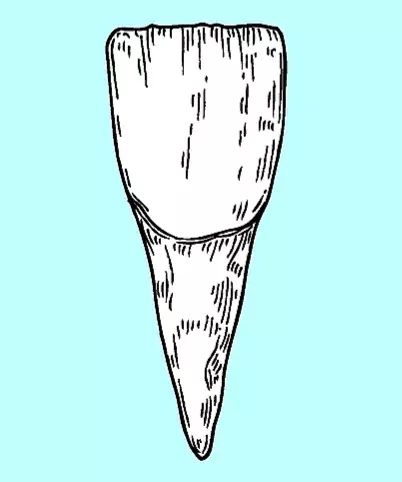
1. Incisors
These are your front teeth or anterior teeth. Every individual has a total of 8 incisors, both in children and adults, and has two types of incisor teeth, 2 central incisors, and 2 lateral incisors on each side in the upper and lower jaw.
Incisors are flat and have sharp edges (chisel-shaped) to bite into the food and cut it into smaller pieces.

2. Canines
There are 4 canines in total, 1-1 canine on each side in the upper and lower jaw. They are sharp pointed teeth and are mostly used for tearing down food items. Canines are also known as cuspids.
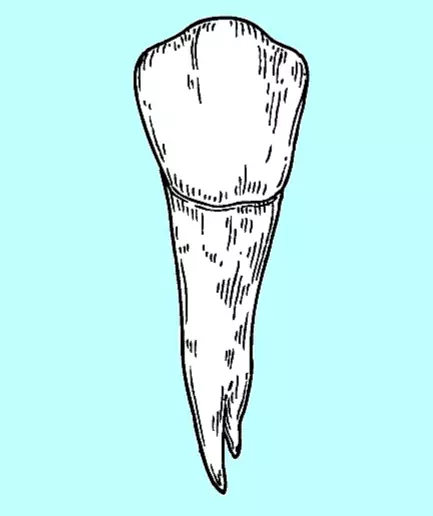
3. Premolars
Premolars are 8 in total, 2-2 premolars on each side in the upper and lower jaw. Premolars are also known as bicuspid. They are mainly used for cutting and grinding food items. Premolars are absent in children.
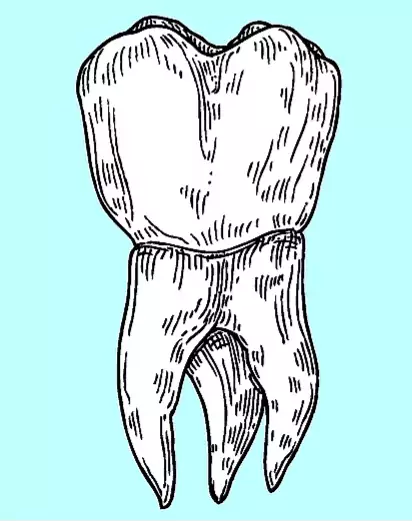
4. Molars
Molars are the largest teeth with large surface areas to help them chew and grind food to make it smaller and facilitate swallowing. Molar teeth are 12 in total in adults and 8 in number in children. Children have 2-2 molars on each side in the upper and lower jaw, and adults have 3-3 molars (including Wisdom teeth, the last 3rd molar tooth) on each side in the upper and lower jaw. 3rd Molars, or Wisdom teeth, are absent in children.
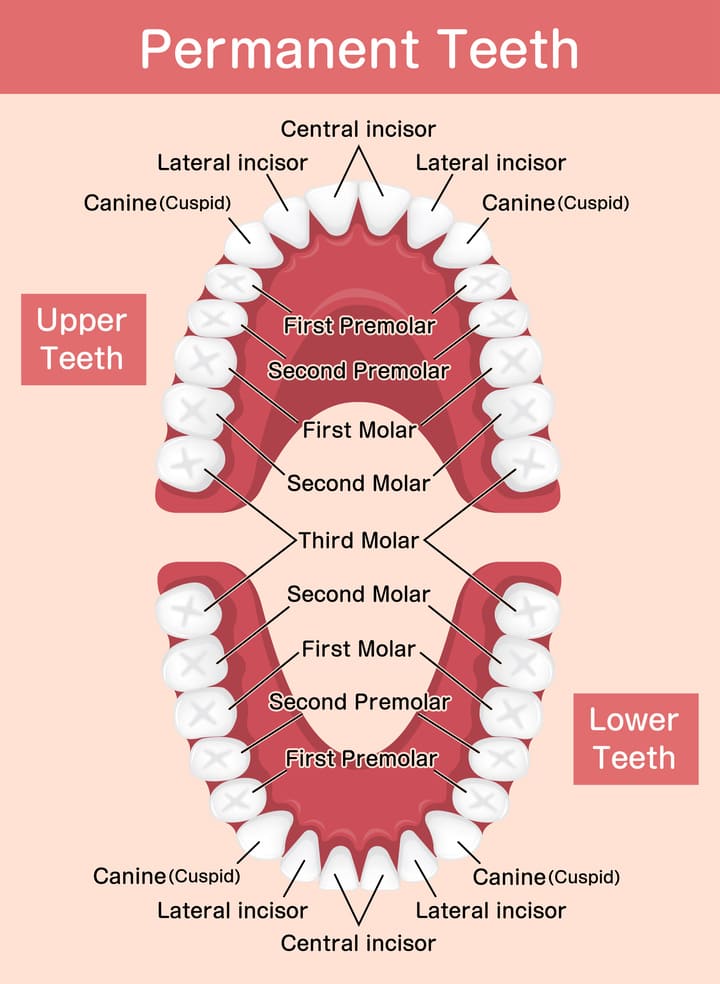
In children, 20 teeth are present, and these are known as deciduous teeth or primary teeth, also known as milk teeth or baby teeth. Children have mainly three types of teeth: 8 Incisors, 4 Canines, and 8 Molars; premolars are not present in infants. Tooth Eruption starts with the lower central incisors. Later, primary teeth or deciduous teeth are replaced by permanent teeth.
Learn more about Teeth Eruption or Teething
An average adult human has 32 teeth in his/her mouth; also known as permanent teeth, or succedaneous teeth, or adult teeth. Adults have 8 Incisors, 4 Canines, 8 Premolars, and 12 molars teeth including Wisdom teeth.
As we discussed, adult humans have 32 permanent teeth, and children have 20 milk teeth or deciduous teeth at the age of 3 years. But in some people, they have less number of teeth or missing teeth, or in some cases, they may have extra teeth.
Wisdom teeth, or 3rd molars, are the last teeth in the mouth; mostly, they are not functional and are not used for chewing food. Not all people may have wisdom teeth, as sometimes they are covered by gums or gingival tissue and do not erupt in the oral cavity (mouth), also known as an impacted wisdom tooth. This causes pain in the movement of the wisdom tooth.
Related: Tooth Numbering System with Teeth Numbers and Names
Tooth Surfaces
Mesial Surface: A tooth surface that is close to the midline or center between two front teeth is called the mesial surface.
Distal Surface: A tooth surface that is very far or away from the midline or center between two front teeth is called the distal surface.
Facial Surface: A tooth surface is towards your face. For anterior teeth, it is the labial surface, and for the posterior teeth, it is the buccal surface.
Labial Surface: A tooth surface facing towards the lips is called the labial surface, such as incisors, canines.
Buccal Surface: A tooth surface facing towards the cheek is called the buccal surface, such as that of premolars and molars.
Occlusal Surface: A tooth surface that is used for chewing and grinding food is called the occlusal surface of a tooth. Such as premolars and molars.
Incisal Surface: A tooth surface that is like a cutting edge, like the cutting edge of incisors.
Proximal Surface: A tooth surface facing the next tooth; for instance, the mesial surface of the first premolar and the distal surface of the canine.
Functions of Teeth
Overall, Teeth help cut, tear, grind, and mix food in humans. Incisors generally cut the food, canines tear the food, and molars grind the food items and convert them into a pre-swallow bolus. Teeth also facilitate the speaking function and overall facial structure.
Summing up
Teeth are an essential part of our body that not only help in eating food, but also help in speaking certain words, so it is important to take care of your teeth because the illness of a single tooth makes you uncomfortable in your day-to-day activities. What can you do for healthy teeth? You can follow Oral hygiene practices for healthy teeth.
I hope this informative article helped you to understand teeth anatomy, types, parts, and functions. You can share this information with your friends and family to make them aware.
